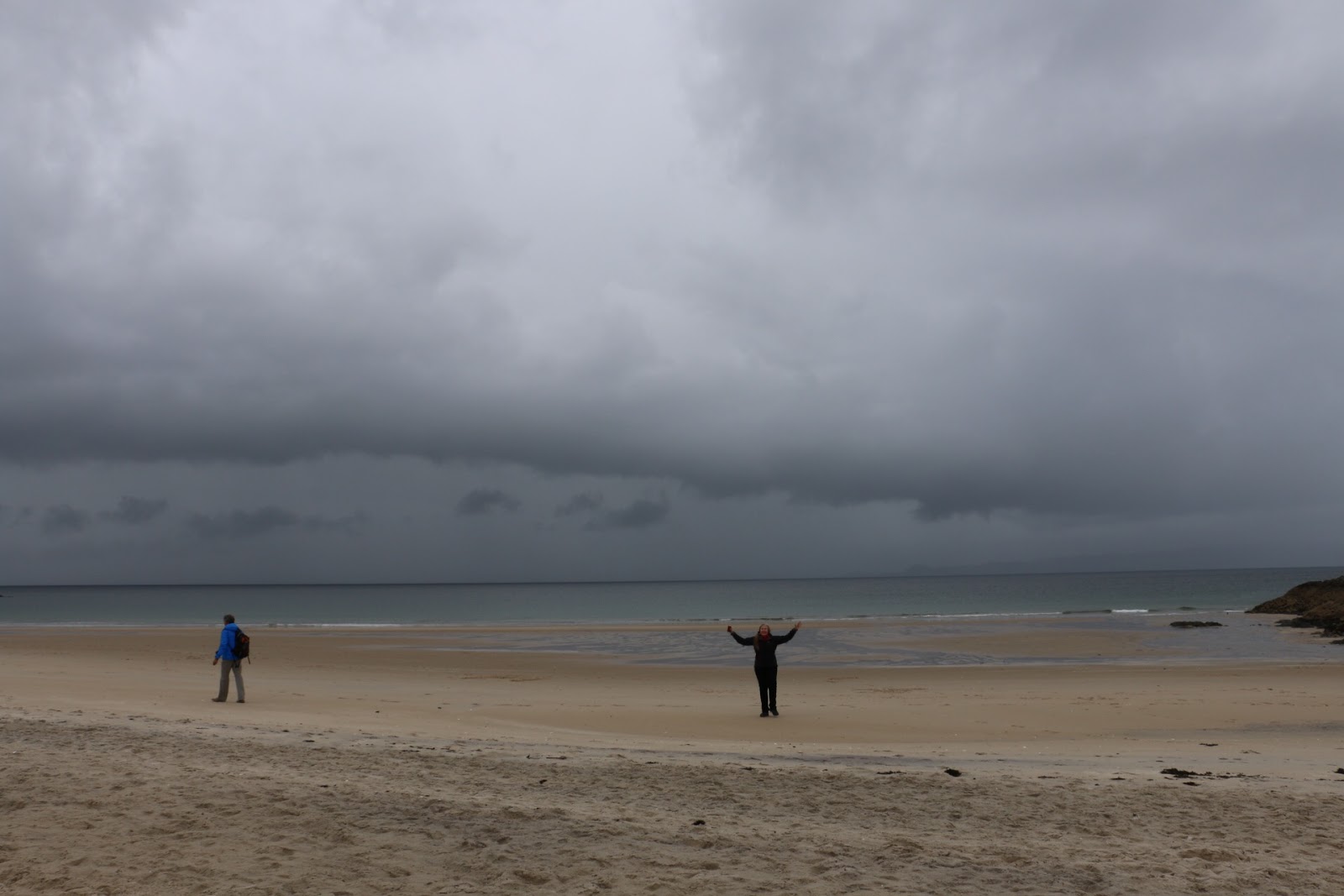A windy, changeable morning. Sunlit rays of mist slant across the brooding glens of pyramidical Rois Bheinn. We've been here at Cooper's Knowe House for most of a week. A frisky black black horse with a mottled gray companion, frolics, grazes and occasionally, on a whim, rears and neighs in the early mornings. I don't know his name. But he's a broad, strong horse and is the perfect image of a kelpie, the Scottish mythological demon that lives deep in the lochs, emerges from the deep in the shape of a black horse to lure human victims to ride on their backs whence they are taken back into the depths and devoured.
On the way here, we stopped in several small towns. In one not far from Gleneagles where the Ryder Cup Golf tournament is underway we found an immense "wickerman" golfer statue. It was early morning and the village seemed deserted which gave the cheery, wry monument an ominous cast. I imagined a cheerful old Scot inviting us to stay a day or two to be the "honoured" guests at their celebration.
Since gale force winds are forecast we're off to Fort William today to see the west Highland museum there which is supposed to have some fine artifacts from the rebellion of '45. I sense Charles Edward Stuart's reputation is rising again, in spite of the 1700 highlanders that died under his leadership at Culloden on that wet stormy day in April 1746.
Outside of Falkirk are two great steel sculptures of the horseheads of kelpies symbolizing both the mythic past and industrial strength of Scotland. The night before last, we had dinner in Inverness at Cafe 1. It was best dinner we've had yet and one of the best I've ever had in the UK. Between courses I decided to ask the young lady serving us how she'd voted in the referendum. She was happy to tell us and to say why. Her explanation was insightful, well-reasoned and demonstrated what one might call formidably clear, critical thinking which is exactly the kind of strength Scotland needs, of course.















